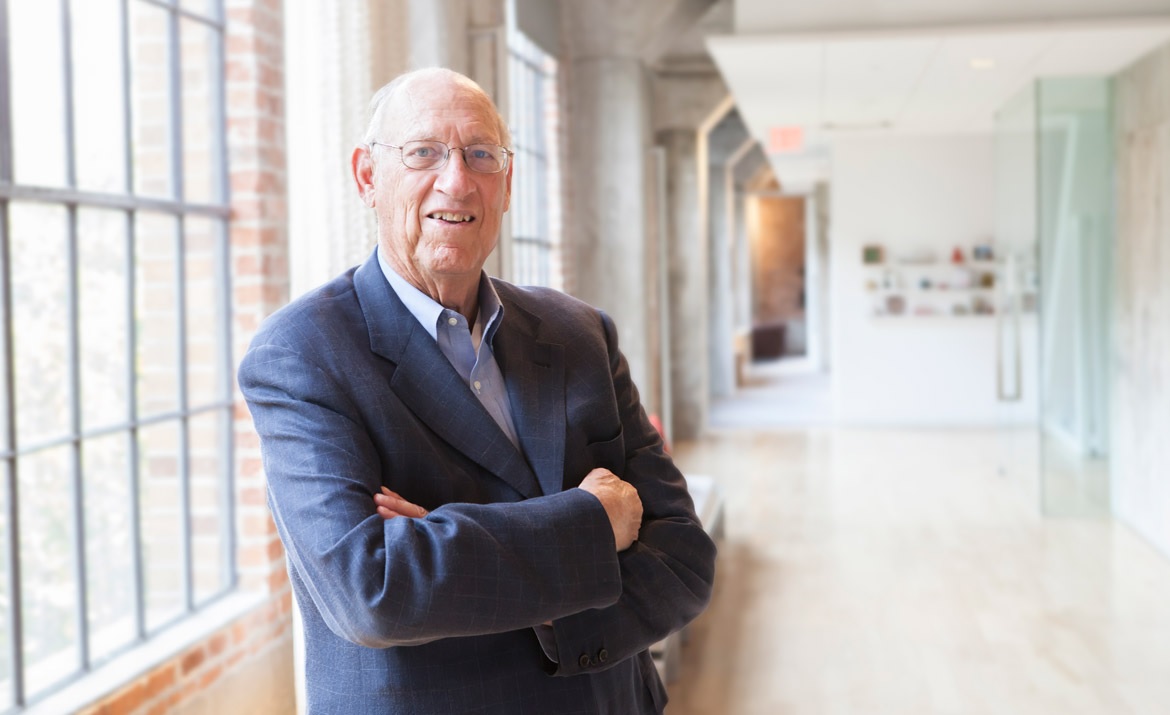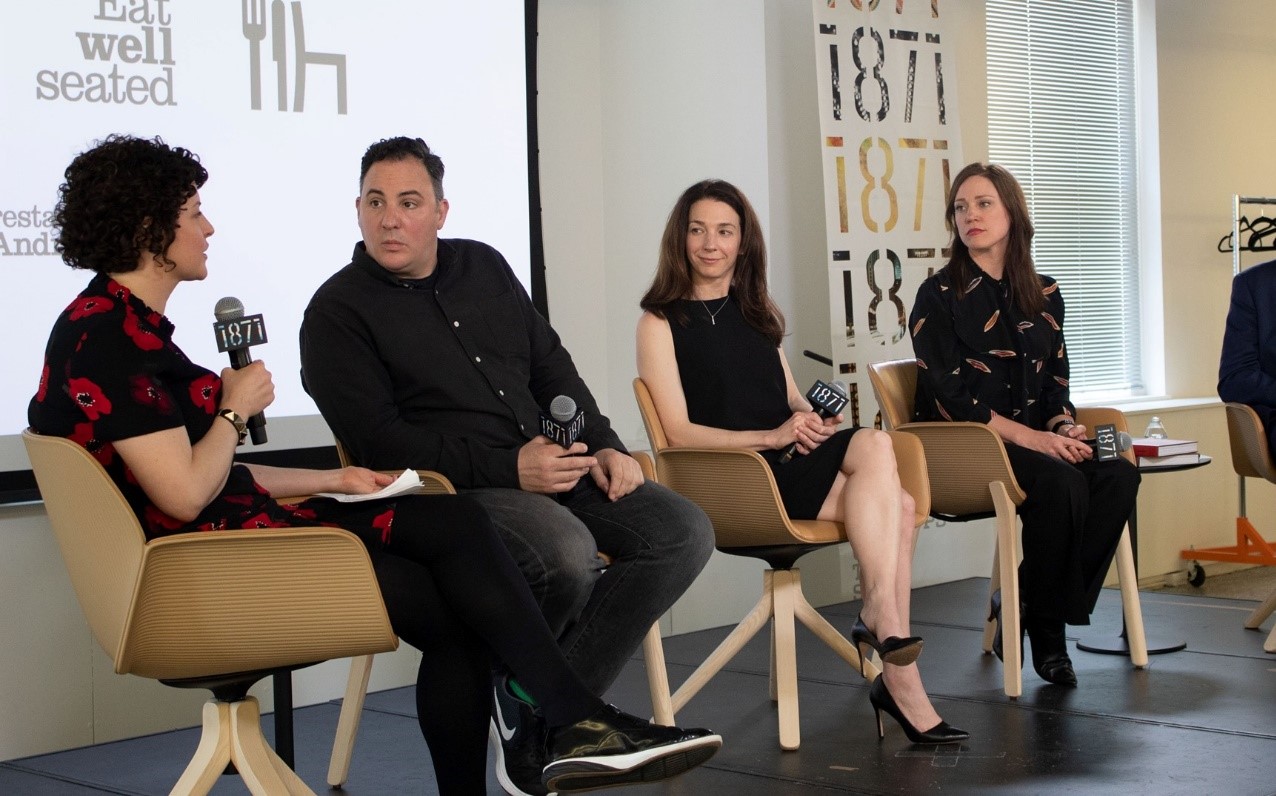Gensler & Its Unique Operating Philosophies that Springs from Low-Key Roots
Founded in 1965, Gensler is a global design and architecture firm that operates in 49 cities in 16 countries. Differentiating itself as a “design thinking” firm—positioning design as a strategic tool to help clients achieve and exceed their business goals—Gensler serves companies representing a broad range of industry types and sectors and carries out assignments that range from workplace interiors to branding campaigns to skyscrapers in booming Asia megacities.
As one of the world’s largest architecture and design firms, Gensler churns out about 3,000 projects a year, everything from building skyscrapers like the Shanghai Tower to interior design. But it also manages to hold robust internal awards programs, turn out yearly research on the future of design and workplace innovation, and evangelize bright ideas from its huge employee base to the rest of the company. Over 5 decades into the business, this architecture legacy was made possible by Arthur Gensler, an American architect legend who revolutionized the design and building industry.
Arthur Gensler: A Namemaker Who Builds an Architecture Legacy
Born in New York in 1935, Gensler wanted to be an architect since he was 5 or 6 years old. “I have no idea why,” he recalled in a 2018 interview with the Nob Hill Gazette in San Francisco. “I played with blocks, erector sets and Lincoln Logs. I just really love buildings. It wasn’t until later that I realized how much I love doing interiors, too, because they really touch people’s lives.”
He studied architecture at Cornell University’s College of Architecture, Art, and Planning with Aldo Giurgola, Tom Canfield, and Dean Mackasey. “They were really down-to-earth, practical people who were actually building buildings that were realistic, usable buildings,” Gensler said in a 2014 interview with historian Martin Meeker from the University of California Berkeley. Gensler received his B.Arch. in 1958, a year after he married Drue Cortell. After working in New York and Jamaica, they moved to San Francisco in 1962.

Gensler was attracted to California contemporary domestic architecture and the work of Gordon Drake, in particular. “He did these sort of redwood homes that I just thought were the cat’s meow,” he told Meeker. He worked for a few architectural firms, including Wurster, Bernardi, and Emmons, where he played a lead role in establishing the design standards for the Bay Area Rapid Transit system, then under construction.
Eventually, Gensler expressed to his boss William Wurster that, though he lacked capital, he wanted to establish his own firm. With Wurster’s blessing, Gensler worked for Wurster in the morning and then became his own boss in the afternoon, working on everything from business development to the actual construction drawings.
Back in 1965, Gensler the firm comprised a one-room office, one draftsman, and $200 in the bank. “Starting out, my goal was to have six employees and do garage remodels,” Gensler said in the 2018 Nob Hill Gazette interview. “What did I know?
Gensler’s firm grew rapidly with offices opening around the U.S. in the 1970s and 1980s, and then overseas in the 1980s and 1990s. By the early 2000s, it was the largest architecture and design company headquartered in the U.S. Gensler’s greatest hits are many: a 35-year long term partnership with San Francisco International Airport that has transformed the terminals; the revamp of the JetBlue T5 terminal at John F. Kennedy International Airport in 2004; and, more recently, the interiors for the new Salesforce Tower in San Francisco, The U.S. Embassy in London, and Goodyear’s Global Headquarters in Akron, Ohio.
A Global Firm Built on Local Opportunity
In the last four years, Gensler launched several new practice areas, adding the most recent—its 20th—to serve the health and wellness sector. According to co-CEO Andy Cohen, the logistics of diversifying into new specialties comes down to three determining factors: perceived market opportunity, strength of client relationships, and depth of passion and expertise. “Since we’re so focused on our client relationships, we have a very good understanding of how their industries are changing,” Cohen says. “This helps us to identify new market opportunities.”
A case in point: The firm had long been involved in designing mixed-use entertainment districts and thought of sports facilities as a natural extension of its expertise. After observing that many universities were investing in upgrading their athletic facilities to help recruit both athletes and students, Gensler launched its sports and recreation practice in 2009, a move precipitated by its own strategic recruitment of Ron Turner. The architect had last been with RTKL and his resume included work on the Staples Center in Los Angeles, Lincoln Financial Field in Philadelphia, and Seattle’s Safeco Field. With Gensler, he has led several projects around the world, including work on a competition entry for Rio de Janeiro’s Olympic Park, a 12.7-million-square-foot area that will stage events for the 2016 Olympics.
Gensler’s most recent launch was driven by the observations and interests of its designers across existing practice areas: “We launched our health and wellness practice last year after hearing from a wide range of clients—developers, employers, retailers, hotels, schools, and cities—who were all trying to figure out a way to incorporate wellness strategies into their facilities,” says co-CEO Diane Hoskins. “We felt that there is an enormous opportunity to rethink the relationship between space and well-being.”

An Inside-out Approach to Architecture
Seizing opportunity is only part of the Gensler story. Understanding the firm’s growth requires a look at its origins. Arthur Gensler established the firm with a unique focus: interior design for commercial tenants. “Much of the interior work was then done by furniture vendors, but Art saw the design of interiors as a legitimate design challenge,” Arthur Gensler’s son – David says. “He believed if it doesn’t solve a problem, it’s not really design. I think that philosophical idea of designing from within for the end user is still fairly novel today.” More than that, the elder Gensler recognized an untapped market, a strategy that would characterize the firm as it grew.
While other firms worked to distinguish their brands with design agendas and signature styles, Gensler adapted with each job to the demands of the client. Arthur Gensler called the approach the “rubber band theory”—the idea of encouraging designers to challenge clients without pushing them so far that their trust was compromised. Though detractors today might say that Gensler is the one bending to please, it’s hard to argue with the results. The firm has assembled an enviable client list that now includes half of Fortune magazine’s Global 100 companies, and 33 of the top 50 U.S. Fortune 500 companies. This roster of large, long-standing clients provides Gensler with two self-reinforcing advantages: repeat business and institutional knowledge. “We advise them on how to help their businesses, but we also get to learn from them,” Hoskins says.
During the recession Gensler may have had to slacken its rubber band a bit as clients needed to cut costs, but the firm worked to help many with the transition. “Our global clients were facing new challenges, so the way we worked with them needed to evolve,” Hoskins says. “So we helped some clients reduce their real-estate footprint by advising them on workplace mobility strategies, and we worked with others to rebrand and reposition undervalued buildings.”
With its diverse practice areas and close ties to big clients, Gensler sustains a business model that consistently yields balanced revenue portfolios. In 2020, 43 percent of the firm’s billings came from architecture jobs and 39 percent from interior design work. The portfolio is fairly balanced geographically as well, with 62 percent of its revenue derived from work in the United States and the rest from abroad which makes the firm well-positioned to take advantage of global trends.
Unlike the conglomerate AECOM and other large firms, Gensler has not grown by mergers and acquisitions. Instead, it has developed expertise and carved deep inroads into its clients’ respective markets. As it grew, the firm embedded itself into different markets—and locations—with a conviction that in order to become global, it must first become local.

Because its international clients are served by local talent with access to a global support network, Gensler has enjoyed a distinct advantage in China. Jun Xia, for instance, was born in Shanghai, and moved to the United States in 1987 to study urban design. He joined Gensler four years later as the firm began expanding into China. His talents and knowledge of the culture have proven mutually beneficial. Now a director for the firm’s Asia region, Xia helped the firm score the Shanghai Tower contract and led the team’s work on it.
As for the near-continuous expansion Gensler has experienced over five decades and throughout numerous recessions, the firm takes an almost Zen approach. “Growth isn’t the objective,” Hoskins contends, “it’s the outcome.”
Gensler’s 3 “C” to Connect and Expand
#1 Collaborative Leadership
There’s no getting around the fact that Gensler’s immense employee count and geographical expanse mean that the company is split hierarchically into many levels.
To make Gensler as flat as possible, Cohen says each group–from the company’s nine global practice areas to the expertise-focused studios within each of the offices–doesn’t just answer to one figure. Instead, groups have two to three leaders and multiple avenues for funneling ideas up.
“The reason we do that is because we believe everyone has aces and spaces. I’m great at some things, and I’m not so great at some things. But you put two people together, and one-plus-one equals five,” Cohen says, highlighting his co-leadership with Hoskins. “She handles the things that she’s great at, and I handle the things that I’m great at. But we collaborate together.”
For example, Diane leads much of the company’s research and strategy efforts, while Cohen excels at client relationships, internal innovation, and design.
Cohen calls the model a “constellation of stars”–having not just one Don Draper-like guru in a group, but multiple.

And to make sure every employee is invested in a shared goal, the entire Gensler organization comes together each decade to author a shared vision and set of goals for where the company is going for the next 10 years. Then they commit to them.
#2 Constant Communications
But to stick to that vision, communication is key. Leaders and their employees alike absorb ideas in a side-to-side flow instead of from the top-down. Every Monday morning, office leaders join on a video call to talk about ideas that have sprung up in their corners, as well as business opportunities and client relationships. Every other week, regional offices call in to share observations. And twice yearly, Gensler holds a super meeting to bring together leaders of the company’s practice areas and client relationship efforts to talk about innovation in their groups, trends in the industry, and client observations.
“Every two weeks, we’re sharing five, 10 ideas–concepts ideas that might have been developed in one region or at the firm level that we want to roll out across the firm,” Cohen says.
Those “super meetings” function more like TED Talks, he says. Gensler employees present thoughts on company innovation and strategy. Even clients guest star to talk about trends and what they want from the firm for a more objective look at the company’s priorities. Four times a year, higher-ups give State of the Union-style broadcasts to highlight good ideas inside the company.

“We do world-class design, and how we do that is by having constant feedback. We’re critiquing each other’s work. We’re bringing in different points of view into the design process so that it’s iterative,” Cohen says.
But communication is also key for another reason. Gensler’s model of a “one-firm firm” mean that multiple of its offices are working on projects for a single client at once.
“Geographically, we are set up so that we can deliver seamlessly around the world. We are one integrated, seamless practice,” Cohen says. “You have a to have a common purpose. You have to have this sense of pride that you want to deliver anywhere in the world, that it’s not just a division or one office. You’re part of this incredible global network. We call it ‘lighting up the network.’ It’s really hard to be able to deliver seamlessly because most companies are set up so that they’re profit centers individually. And we tend to look at it holistically as one integrated organization.”
#3 Celebrate Success
In addition to championing ideas from anywhere and communicating them constantly, the Gensler organization makes a point to celebrate successes internally.
“We’re all in this together. And we believe in our future together. It’s not about the individual. It’s about the team. If we win, I win–not the other way around,” Cohen says.
There’s the firm-wide Gensler Design Excellence Awards, in which the company culls thousands of projects for about 150 finalists; outside critics like design editors critique them and hand out awards. The company also celebrates its strong research arm–which puts out seminal research like the yearly Gensler Design Forecast–with the Gensler Research and Innovation Awards, also judged by a jury.
The results of both awards are celebrated and broadcast throughout the company’s network of 6,000 employees and beyond.
“It really becomes this benchmark every year of how much we’ve pushed the envelope on design and design excellence,” Cohen says. “We’re constantly focused on the idea of having discourse, having feedback, having different players and points of view coming to the table. A lot of other firms have one innovative person or one chief designer, and everything goes through that person. We are the antithesis of that.”









